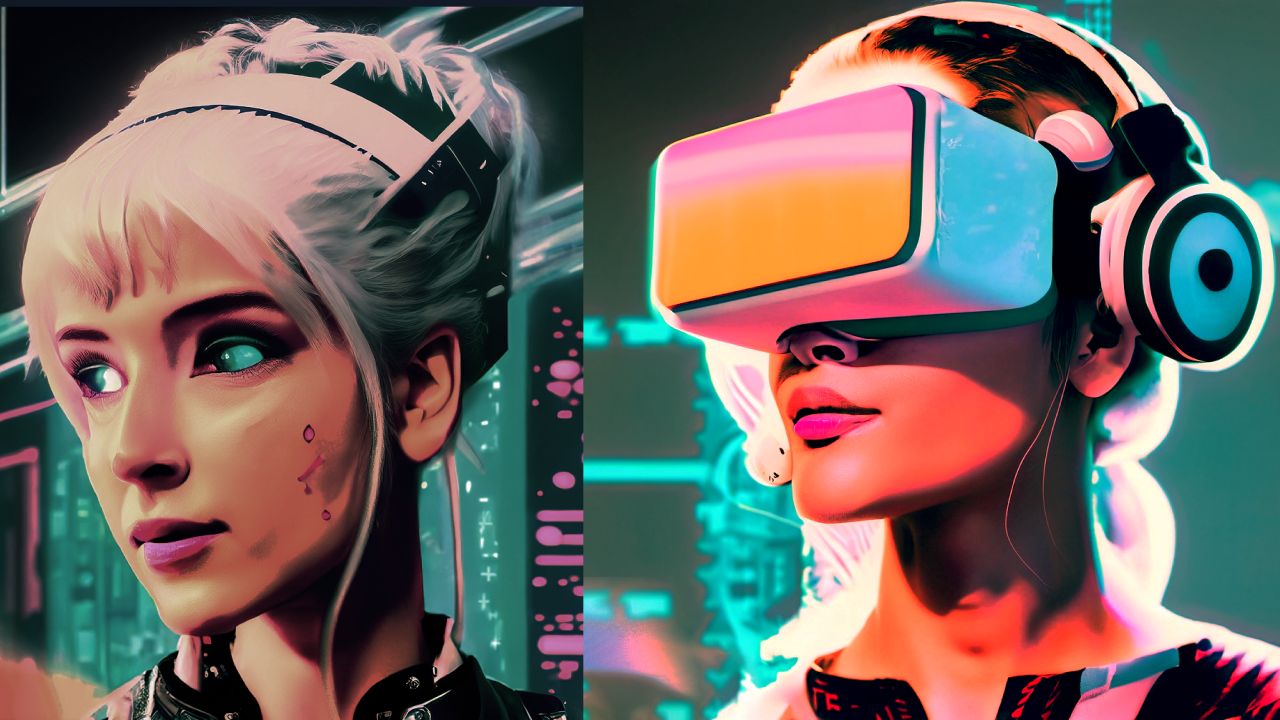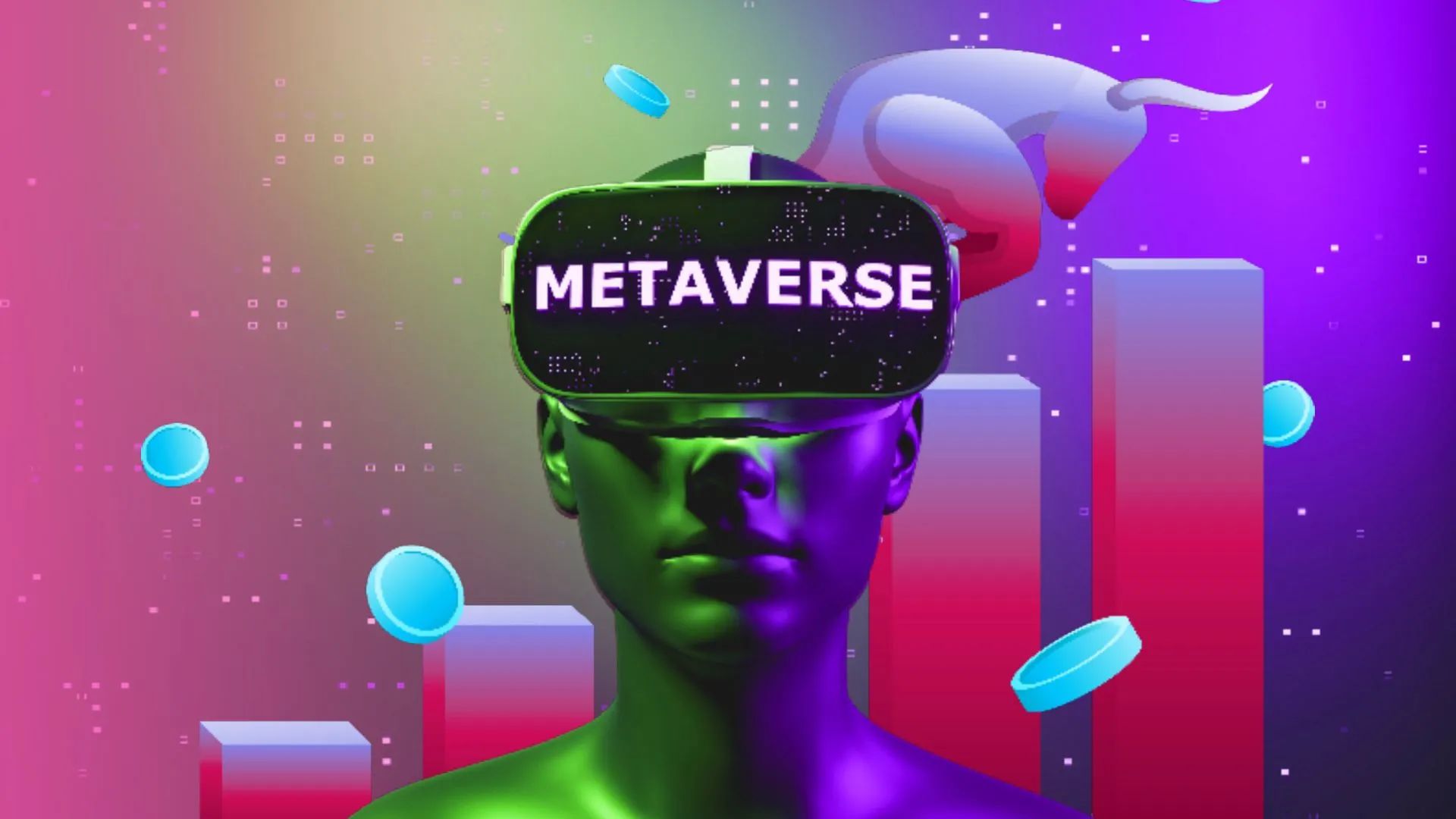Introduction
The concept of the Metaverse has gained significant attention in recent years, especially with the advancements in virtual reality and augmented reality technologies. But who invented the term “Metaverse” and what does it actually mean?
The term “Metaverse” refers to a virtual universe, a collective space that consists of multiple interconnected virtual worlds. It is a digital realm where users can interact with each other and explore various virtual environments, often blurring the lines between the physical and digital worlds.
The idea of the Metaverse has been present in popular culture for decades, but the term itself was officially coined and popularized in the 1992 science fiction novel “Snow Crash” by Neal Stephenson. In the book, the Metaverse serves as a virtual reality-based successor to the internet, allowing people to access and interact with various online spaces and engage in activities ranging from socializing and commerce to gaming and education.
The notion of a digitally interconnected world has fascinated many visionaries and futurists, who speculated about the possibilities and implications of such a virtual universe. However, it was the advent of new technologies and platforms that brought the concept closer to reality.
Virtual reality (VR) became a significant driver in the development of the Metaverse idea. With VR headsets and immersive experiences, users could feel as if they were truly present in a virtual environment, interacting with others and exploring virtual worlds in a more immersive and engaging way.
Over the years, VR platforms like Second Life, created by Philip Rosedale in 2003, played a crucial role in showcasing the potential of the Metaverse. Second Life allowed users to create their virtual personas and explore a vast virtual world where they could socialize, trade virtual goods, and even build their own virtual environments.
Definition of the Metaverse
The term “Metaverse” encompasses various virtual reality-based environments and platforms that aim to create a shared online space where users can interact and engage with each other. It represents a convergence of technology, virtual reality, and social interaction to create a digital universe that transcends traditional internet experiences.
At its core, the Metaverse is a collective space consisting of interconnected virtual worlds. These worlds can be accessed through virtual reality headsets, augmented reality devices, or even traditional computer screens. Users navigate and interact with the Metaverse using avatars, digital representations of themselves, allowing for a more immersive and personalized experience.
Unlike the traditional internet, which primarily focuses on information retrieval and static websites, the Metaverse is designed to facilitate social connections and real-time interactions. It enables users to engage in a wide range of activities, including virtual meetings, virtual events, online gaming, virtual commerce, and even virtual education.
One of the key aspects of the Metaverse is its ability to blur the lines between the physical and digital worlds. In the Metaverse, users can explore and create virtual environments that mimic real-world locations, interact with other users in real-time, and even engage in activities that mirror real-world actions and behaviors.
Furthermore, the Metaverse offers a sense of persistence and continuity. Changes made by users within the virtual space are often retained, allowing for the creation of long-term virtual experiences and communities that evolve and develop over time. This sense of continuity enhances the feeling of immersion and engagement within the Metaverse.
It is important to note that the concept of the Metaverse is still evolving, and there is no universally agreed-upon definition. Different organizations, developers, and researchers have their own interpretations and visions for what the Metaverse should be. However, the core idea remains the same – a digital universe where individuals can connect, interact, and explore in ways that were previously unimaginable.
Origin and Evolution of the Concept
The origins of the concept of the Metaverse can be traced back to the early years of virtual reality and the emergence of online gaming and virtual communities. The idea of a shared online space where users could interact and explore virtual worlds was already present, but it was the advancements in technology and the popularization of the term that propelled the concept forward.
In the early 2000s, platforms like Second Life became pioneers in creating virtual worlds that resembled the Metaverse. Second Life, founded by Philip Rosedale, allowed users to create their own unique avatars and explore a vast virtual landscape. It served as a sandbox for creativity, social interaction, and even virtual commerce, showcasing the potential of the Metaverse concept.
Another significant influence on the development of the Metaverse idea was Neal Stephenson’s 1992 novel “Snow Crash.” The book described a virtual reality-based universe called the Metaverse, where users could assume avatars, interact with each other, and participate in a wide range of activities. It popularized the term and introduced the concept to a broader audience.
As technology progressed, virtual reality and augmented reality technologies began to converge, pushing the boundaries of what the Metaverse could be. Companies like Oculus and HTC developed VR headsets, allowing users to immerse themselves in virtual environments and experience the Metaverse on a more personal level.
Social media and online gaming also played a crucial role in the evolution of the concept. Platforms like Facebook and Fortnite provided spaces where millions of users could gather, communicate, and engage in shared experiences. These platforms showcased the social potential of the Metaverse, offering glimpses of what a fully immersive and interconnected virtual universe could look like.
With the increasing interest and investment in virtual reality, augmented reality, and blockchain technology, the concept of the Metaverse has gained even more traction in recent years. Visionary companies and developers are exploring new ways to create immersive and interconnected virtual worlds, aiming to bring the Metaverse to mainstream audiences.
It is worth noting that the concept of the Metaverse is continually evolving and is still a work in progress. Different stakeholders in the technology industry have differing visions and interpretations of what the Metaverse should be. However, the overarching goal remains the same – to create a shared digital universe that allows for unprecedented social interaction, creativity, and exploration.
Philip Rosedale and Second Life
Philip Rosedale is a notable figure in the development of the Metaverse concept through his creation of the virtual world platform, Second Life. Launched in 2003, Second Life became a pioneering example of what the Metaverse could be, allowing users to create avatars, interact with others, and engage in a wide range of activities within a virtual environment.
Rosedale’s background in technology and entrepreneurship paved the way for the creation of Second Life. He had previously co-founded a technology company called “RealNetworks” and played a significant role in the development of streaming media technology. This experience influenced his vision for a platform that could go beyond static websites and offer a truly interactive and immersive online experience.
Second Life provided users with a virtual world where they could explore countless locations, interact with other users in real-time, and even create and trade virtual goods and services. Users were given a high level of creative freedom, enabling them to build their own virtual environments, create unique avatar appearances, and design virtual objects.
The success of Second Life demonstrated the potential of the Metaverse concept, showcasing how a digital universe could provide social engagement, economic opportunities, and avenues for self-expression. It attracted millions of users from around the world, fostering a vibrant and active community.
Moreover, Second Life served as a platform for various organizations, businesses, and educational institutions to establish a presence within the virtual world. Companies created virtual offices and storefronts, artists and musicians showcased their work, and schools conducted virtual classes and conferences.
However, Second Life also faced its share of challenges and controversies. The platform struggled with issues such as server stability, user moderation, and scalability. Additionally, concerns arose regarding the potential for real-world legal and ethical dilemmas in a virtual environment where users had extensive freedom.
Despite these challenges, Philip Rosedale’s innovative approach and Second Life’s success paved the way for future developments in the Metaverse space. It inspired a generation of creators, entrepreneurs, and technologists to explore new possibilities for digital interconnectedness and immersive experiences.
Today, Philip Rosedale continues to be an influential figure in the tech industry, advocating for the future of the Metaverse and pushing boundaries in virtual reality and virtual worlds. His work with Second Life opened the doors to an exciting era of digital exploration and social interaction, laying the foundation for what the Metaverse could become.
Neal Stephenson and Snow Crash
Neal Stephenson, an American author known for his science fiction works, played a pivotal role in popularizing the concept of the Metaverse through his influential novel, “Snow Crash,” published in 1992. The book introduced the term “Metaverse” and depicted a fascinating vision of a virtual reality-based universe.
In “Snow Crash,” the Metaverse is portrayed as a sprawling virtual landscape where users can assume digital identities and interact in various locations and environments. Stephenson’s vivid description of the Metaverse captivated readers and provided a glimpse into the potential of a digital world where people could escape reality and engage in immersive experiences.
The protagonist, Hiro Protagonist, is a hacker and a courier who navigates through both the physical world and the Metaverse. Stephenson’s storytelling combines elements of cyberpunk, virtual reality, and satire, creating a compelling narrative that explores themes of technology, society, and identity.
One of the key aspects of “Snow Crash” is the notion that the Metaverse serves as a successor to traditional internet communication. Stephenson envisions a future where people spend a significant amount of their time in this virtual space, engaging in social interactions, conducting business, and even attending virtual events.
The concept of the “avatar,” a digital representation of oneself within the Metaverse, also originated from “Snow Crash.” Avatars allow users to personalize their virtual identity, interacting and communicating with others in a more immersive and visual manner.
“Snow Crash” not only popularized the term “Metaverse” but also spurred critical discussions and philosophical debates about the implications of virtual reality and the potential societal impact of a fully immersive digital universe. It served as a source of inspiration for many who believed in the transformative power of technology and its impact on human interaction.
Decades after its publication, “Snow Crash” remains a classic and influential work in the science fiction genre. Its portrayal of the Metaverse serves as a foundation, influencing the vision of the Metaverse in subsequent years and inspiring the development of virtual reality technologies and online platforms.
Neal Stephenson’s visionary writing and his conceptualization of the Metaverse in “Snow Crash” helped shape the collective imagination around the idea of a virtual universe. His work continues to resonate with readers and technologists alike, fueling the ongoing exploration and development of the Metaverse concept.
Virtual Reality and the Metaverse
Virtual reality (VR) technology has been instrumental in shaping the concept of the Metaverse. With its immersive and interactive nature, VR provides a platform for users to enter and engage with virtual environments, bringing them closer to the vision of a fully realized Metaverse.
VR headsets, such as those developed by Oculus, HTC, and other companies, transport users into digital realms where they can interact with objects, navigate virtual spaces, and socialize with others in real-time. These experiences form the building blocks of the Metaverse, creating a sense of presence and immersion that goes beyond traditional online interactions.
As VR technology continues to evolve and improve, the possibilities for the Metaverse expand. Current VR systems offer high-resolution graphics, realistic soundscapes, and intuitive hand-tracking capabilities, allowing for a more seamless and immersive user experience.
One of the key elements in bridging virtual reality and the Metaverse is the concept of avatars. Avatars serve as the user’s digital representation in the virtual world, allowing them to navigate and interact with others. In VR, avatars can be customized and controlled in real-time, enabling users to express themselves and engage with the Metaverse in a more personal and embodied manner.
With the advancement of VR technology, developers are creating virtual experiences and platforms that mimic real-world activities within the Metaverse. Users can engage in virtual social gatherings, attend virtual conferences, explore virtual museums, or even participate in virtual sports and games. These experiences not only foster social connections but also enable individuals to explore and express themselves in new and exciting ways.
Moreover, VR allows for the creation of shared multiuser experiences within the Metaverse. Users can interact and collaborate with others, forming connections and communities that transcend physical boundaries. These shared experiences are the foundation of a thriving and vibrant Metaverse, where individuals can engage in social, cultural, and economic activities with global reach.
While VR technology has made significant strides in creating immersive virtual experiences, the development of the Metaverse is still an ongoing endeavor. The vision of a fully realized Metaverse involves seamless integration between various virtual reality platforms and interconnected virtual worlds. It requires collaboration among developers, technologists, and content creators to build a coherent and expansive digital universe that reflects the diversity and complexity of real-world interactions.
Ultimately, virtual reality serves as a stepping stone towards the creation of the Metaverse. It provides the tools and experiences that bring us closer to a fully immersive digital universe, where individuals can explore, learn, collaborate, and create in ways that were once limited by physical constraints.
The Popularization of the Term
While the concept of the Metaverse has been present in science fiction and technology circles for years, the term itself gained widespread popularity in recent times. This surge in recognition can be attributed to various factors, including technological advancements, media coverage, and the increasing interest in virtual reality and augmented reality experiences.
One catalyst for the popularization of the term “Metaverse” was the growing interest and investment in virtual reality (VR) and augmented reality (AR) technologies. As VR headsets became more accessible and immersive, users began to experience the potential of a virtual universe where people could interact, create, and explore. This surge in interest led to a heightened discussion around the concept of the Metaverse.
Media coverage also played a significant role in spreading awareness of the Metaverse. With the rise of technology-focused publications, blogs, and podcasts, the concept gained attention and became a topic of interest and speculation. Articles, interviews, and discussions around the Metaverse helped to shape public understanding and curiosity.
In addition, the Metaverse caught the attention of business leaders and influencers, further amplifying its popularity. Companies and organizations recognized the potential of the Metaverse for various industries, including gaming, entertainment, education, and even real estate. This recognition led to a flood of discussions, presentations, and investments in the development of technologies and platforms that could spur the growth of the Metaverse.
Notably, the COVID-19 pandemic played a role in accelerating the popularization of the term “Metaverse.” As physical gatherings and experiences became limited, people turned to virtual alternatives for work, education, socializing, and entertainment. This shift highlighted the importance of digital spaces and fueled discussions around the Metaverse as a solution for creating immersive and interactive virtual experiences.
Furthermore, the Metaverse became a topic of interest and exploration for content creators, artists, and developers. They sought to push the boundaries of virtual experiences, experimenting with new forms of storytelling, interactive art installations, and collaborative projects within the digital realm. Their work showcased the creative potential and possibilities of the Metaverse, contributing to its popularity among both creators and audiences.
As the concept of the Metaverse continues to gain traction, it has sparked debates and discussions surrounding its definition, scope, and ethical considerations. It has become a buzzword in the technology industry and an aspiration for many researchers, developers, and enthusiasts who see the potential for a truly immersive, interconnected digital universe.
Ultimately, the popularization of the term “Metaverse” has brought attention to the vision of a future where virtual reality, augmented reality, and other emerging technologies converge to create a shared online space that transcends traditional internet experiences. While the road to achieving a fully realized Metaverse is still unfolding, the growing interest and recognition of the concept have set the stage for continued exploration and innovation.
Conclusion
The concept of the Metaverse, a virtual universe where users can interact and explore interconnected digital worlds, has been a long-standing vision that has captured the imagination of technologists, futurists, and science fiction enthusiasts. In recent years, advancements in virtual reality, augmented reality, and other emerging technologies have brought us closer to realizing this vision.
The term “Metaverse” was popularized through works such as Neal Stephenson’s novel “Snow Crash” and platforms like Second Life created by Philip Rosedale. These early examples showcased the potential of a digital universe where users could socialize, create, and conduct various activities in a virtual environment.
Virtual reality played a crucial role in shaping the concept of the Metaverse. By offering immersive and interactive experiences, VR technology allows users to feel present in digital realms and engage with others in real-time. Avatars, personal digital representations, further enhance the sense of embodiment and identity within the virtual space.
The popularization of the term “Metaverse” can be attributed to factors such as media coverage, technological advancements, and the growing interest from various industries. The term gained momentum as virtual reality and augmented reality experiences became more accessible, resulting in a surge of discussions and investment in the development of technologies and platforms to bring the Metaverse to fruition.
As the concept expands, the definition and vision of the Metaverse continue to evolve. Developers, creators, and researchers are pushing boundaries, striving to create a shared digital universe that revolutionizes how we socialize, work, learn, and entertain. The COVID-19 pandemic has also accelerated the exploration of virtual spaces as alternatives to physical gatherings, reinforcing the importance and potential of the Metaverse.
While challenges remain, including technical hurdles, ethical considerations, and ensuring inclusivity and accessibility, the growing interest and enthusiasm surrounding the Metaverse signal a promising future. As technologies continue to advance and our understanding of immersive digital experiences deepens, the Metaverse holds the potential to reshape how we interact, collaborate, and explore a new and interconnected virtual frontier.
The journey towards the Metaverse is ongoing, propelled by the collective imagination, innovation, and collaboration of individuals and organizations. With each new development and breakthrough, we move closer to a future where the boundaries between physical and digital realms blur, and the possibilities within the Metaverse become boundless.

























